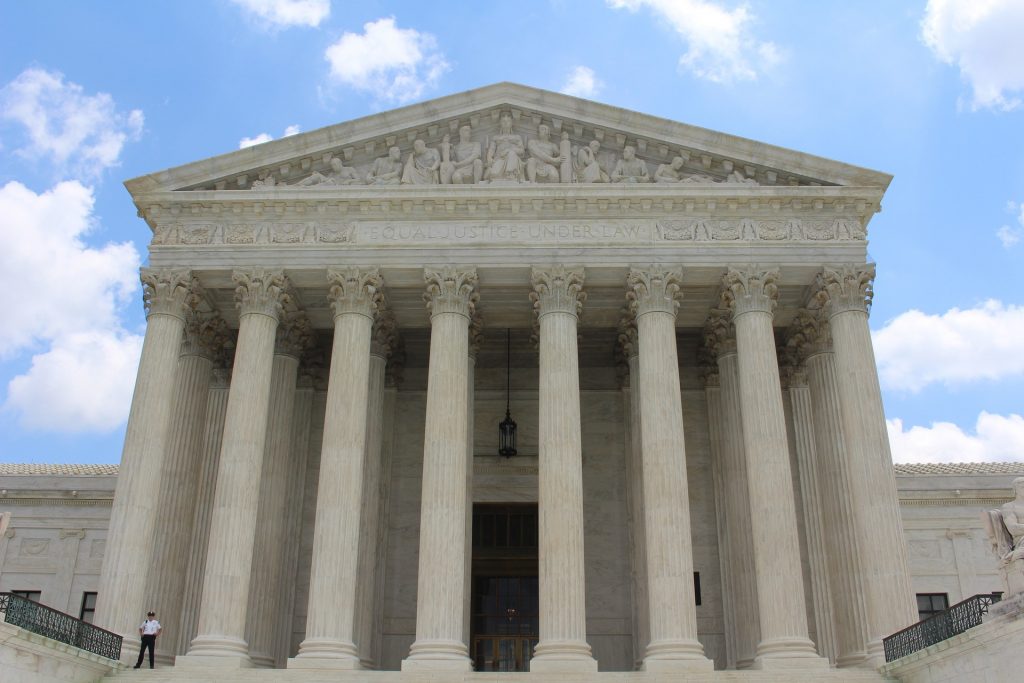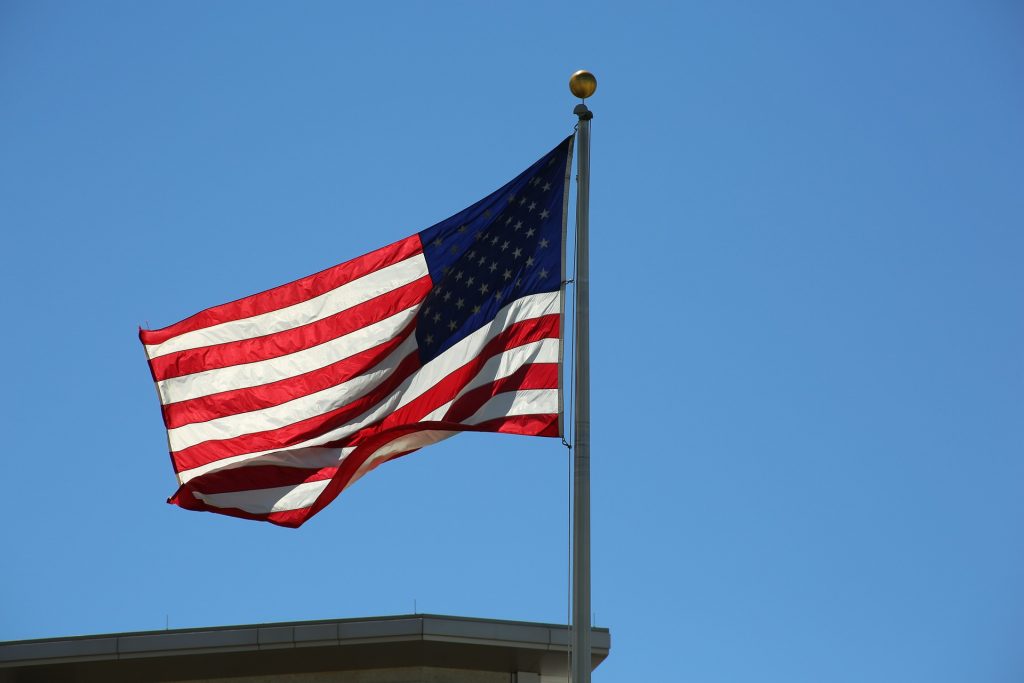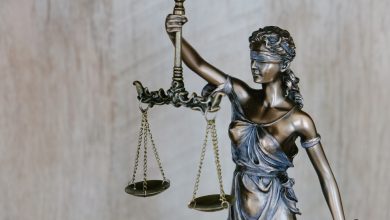The Birth of American Democracy

While those living in the United States and many other countries across the world take democracy for granted, its presence in the modern world has been extremely short-lived when compared to governments of the past. The idea of democracy was a radical concept at the time when pen went to paper to write the United States constitution. Although some societies in the ancient world practiced the idea of democracy, they too were the exception to the rule of monarchies.
The first democracy in known history is attributed to ancient Athens, and that is where the term originated from the word “demos,” which means “common people,” and the word “kratos,” which means strength. Together, the term democracy meant “rule by the people,” and this concept first appeared in 508 B.C. However, large portions of Greek society at the time, such as women and slaves, were not allowed to vote.
The golden age of Athenian democracy reached its peak near 430 B.C. under their skilled orator and leader Pericles. In 404 B.C., though, Athens was defeated by Sparta, and the first modern democracy faded into the history books.

What Is Democracy?
Democracy is a form of government that centers around the authority of the people to elect their governing legislation. The foundation of democracy defines who these people are and what authority they have. Cornerstones of democracy in the United States include freedom of speech, freedom to peacefully assemble, and equality for all people.
A democracy is typically defined by three elements: an executive, a legislature, and the right to vote. The executive, or president, is elected in popular elections and is responsible to the voters or to a legislature. The legislature is also chosen in fair elections. The most important aspect of defining a modern democracy is universal suffrage, allowing all citizens the right to vote.
The First Test of Democracy in America
It can be argued that American democracy did not begin in 1776 with the Declaration of Independence. It did not come in 1788 either, when the states ratified the U.S. Constitution. Many believe that true American democracy did not even begin in 1789 when George Washington took office. Rather, the first true test of American democracy took place when Washington published his farewell address in 1796, which cemented America’s place as a stable democratic state.
At the time of Washington’s presidency, rulers would take power and keep it until they died. This was typically done in monarchies in which a king or queen would rule and relinquish power to a family successor when they died. When Washington stepped down, there was no two-term limit in place yet, but his actions set a new precedent for the country.
In his farewell address, Washington detailed the importance of a unified government and called for national unity. He called for party squabbling to stop and an end to South, North, and West sectionalism. Washington’s 51-paragraph message of unity was incredibly significant for an infant nation struggling to become more than a loose collection of independent states.

American Democracy in the 19th Century
American democracy was far from perfect at the end of the 18th century. But during the 1800s, democratic reforms slowly made their way through the system. Examples include abolishing the property qualifications for voting, and the political party system.
A turning point in the story of American democracy came in the election of 1828. John Quincy Adams was the incumbent, and he was opposed by Andrew Jackson in a rematch of the election of 1824. Jackson supporters called themselves the “Democrats,” thus creating the Democratic Party.
Up until that point, the two active parties in America were the Federalist Party, which collapsed in 1815, and the Democratic-Republican Party. During the election of 1824, the party began to split between those who supported Jackson and those who supported Adams. Supporters of Adams became known as National Republican Party, which later dissolved and was replaced by the Whig Party before finally being replaced by the Republican Party in 1854.
The Election of 1824
The controversial election of 1824 pitted four candidates against each other: John Quincy Adams, Andrew Jackson, Henry Clay, and William H. Crawford. None of the candidates won a majority of the electoral vote, so according to the 12th Amendment, a contingent election was held in the House of Representatives. Clay had received the least number of votes and was eliminated from the contingent election, but as he shared similar views, he poured his support to Adams, who won easily.
The Election of 1828
Jackson and his supporters seized upon the “corrupt bargain” that was made between Clay and Adams that led to Adams’ election in 1824. The election of 1828 differed greatly to that from four years prior, as party organization had taken firm shape. The new Democratic party framed the last election by the House as the work of a small group of political elites that would lead the nation in a self-serving manner.
Jackson’s campaign was headquartered in Nashville, Tennessee, and at the local level, his supporters worked diligently to gather as many new voters as possible. Rallies and parades were held proclaiming Jackson as the common man fighting against the corrupt elite. New democratic organizations called Hickory Clubs, a play on Jackson’s nickname “Old Hickory,” also worked tirelessly to get Jackson elected. The messaging worked brilliantly, and Jackson won the election receiving 68 percent of the electoral vote and 56 percent of the popular vote.
The Second Party System
Political scientists categorize the period from 1828 to 1854 as the Second Party System, which stemmed from greatly increased voter interest in 1828. The election day turnouts were much larger that year than in previous elections, and party loyalty was at an all-time high. Party newspapers also came into prominence during this period, as the vast majority of newspapers were closely linked to one party. In addition, for the first time, two-party politics had reached the South and the West, areas that had been single-party regions.
The second of the two parties was the Whig Party, which was an offshoot of the former National Republicans Party. Democrats at the time stood for the power of the people, while Whigs were more interested in unchanging constitutions and the rule of law.
Formation of the Republican Party
The Republican Party, also referred to as the Grand Old Party (GOP), was formed in 1854. Its founders formed the party in response to the proposed Kansas-Nebraska Act, which would allow for the expansion of slavery into western territories. The ideologies of the party included classical liberalism, economic reform, and the opposition of slavery. Abraham Lincoln was the first Republican president, and with the emancipation proclamation, he abolished slavery, thus accomplishing one of the Republican Party’s original goals.
When Did African Americans Get the Right to Vote?
In the aftermath of the Civil War in 1865, four million enslaved African American men, women, and children were granted their freedom with the 13th Amendment. But as Frederick Douglass said, “Slavery is not abolished until the Black man has the ballot.”
One month prior to Douglass’s quote, Abraham Lincoln was assassinated. In his place, Tennessee-born Andrew Johnson had the task of reconstructing the country. As a strong believer in state’s rights, Johnson was particularly lenient to the southern states with his reconstruction policy. The former Confederate states were required to ratify the 13th Amendment, but they were free to re-establish their governments.
Civil Rights Bill
The former Confederate states were not about to give up slavery and enacted new laws known as the Black Codes, which denied African Americans the right to vote and restricted other basic human rights. Republicans were outraged at the new laws and argued they attempted to re-establish slavery under a different name.
In response, Congress passed the Civil Rights Bill, which gave African Americans the full rights of United States citizens. However, President Johnson vetoed the bill, and Congress overrode his veto, the first time in U.S. history that Congress created a law over a president’s veto. The second instance would come a year later when Congress passed a new Reconstruction Act over Johnson’s veto. Throughout the next decade, African Americans voted in large numbers and elected 22 black men into Congress.
The 14th Amendment
Approved by Congress in 1866, the 14th Amendment gave citizenship to all men “born or naturalized in the United States.” The Amendment included “equal protection of the laws” to all U.S. citizens, including former slaves.
The 15th Amendment
Passed by Congress in 1870 as the last of the three Reconstruction Amendments, the 15th Amendment declared that the right to vote could not be “denied or abridged by the United States or by any state on account of race, color, or previous condition of servitude.” Although the 15th Amendment made it impossible for states to discriminate voting rights on the basis of race, it created a loophole that allowed states to determine their own qualification specifics for suffrage.
Southern states immediately seized upon these qualifications and enacted a variety of practices to disenfranchise African American voters, such as poll taxes and literacy tests, among others. With new white-dominated legislatures, southern states effectively re-established Black codes in the form of Jim Crow laws, which would last for another century.
Civil Rights Act of 1964
Securing voting rights became one of the central focuses of the civil rights movement in the 1950s and 1960s. The Civil Rights Act of 1964 banned segregation in public schools and other public places. But it did not address the discrimination of voting rights.
Voting Rights Act of 1965
During a peaceful march led by Martin Luther King Jr., in March 1965, state and local law enforcement brutally attacked civil rights activists in Selma, Alabama. The attacks brought new attention to the voting rights movement, and the Voting Rights Act was signed into law by President Lyndon Johnson later that year. The Voting Rights Act banned literacy tests and other forms of disenfranchisement that had been practiced for nearly 100 years.
It would take another year for poll taxes to be banned. In 1966, Harper v. Virginia Board of Elections was ruled on by the U.S. Supreme Court, which declared that poll taxes were unconstitutional.
Before the Voting Rights Act was passed, it was estimated that just 23 percent of eligible African Americans were registered to vote. In 1969, that number nearly tripled to 61 percent.
Shelby v. Holder
In 2013, the Supreme Court ruled in a 5-4 opinion that a key provision of the Voting Rights Act was unconstitutional. The provision was that states that had a history of voter discrimination must look for federal approval before election laws can be changed. In response to the Court’s ruling, many states passed new voting restrictions, including limiting the number of early voters and requiring voters to show a photo ID. The laws were passed in the name of fraud prevention, but opponents viewed them as disproportionately affecting African American and Latino voters.

Women’s Suffrage Movement
The campaign for women’s suffrage began in the 1820s when most states granted all men the right to vote, regardless of how much property or money they owned. As reform was happening across the country, including anti-slavery organizations and other movements, the way women were viewed began to be challenged. During this time, men believed that a “true” woman was one that was concerned solely with the welfare of the family and home. But a new way of thinking began to come about as change was rapidly taking place throughout the country.
The Seneca Falls Convention
The first significant moment in the women’s suffrage movement took place in 1848, when a group of abolitionist activists met in Seneca Falls, New York, to discuss women’s rights. While the group was mostly made up of women, some men attended as well. The convention was held by Elizabeth Cady Stanton, and Lucretia Mott and most delegates agreed that women should be treated equally to men.
Days before the convention, Stanton drafted the Declaration of Sentiments and Grievances, which proclaimed that all men and women are created equal. It went on to detail all the injustices against women in the United States. Frederick Douglass attended the convention and went on to publish the Declaration in his newspaper, The North Star.
After 21 years passed with no progress made, Stanton and Susan B. Anthony established a new group called the National Woman Suffrage Association in 1869. As the 15th Amendment gave all citizens the right to vote and defined citizens as males, some in the women’s suffrage movement opposed its addition to the Constitution. But others believed it was unfair to African American enfranchisement and supported the Amendment. That group started the American Woman Suffrage Association, and the two groups were at odds until 1890 when the two groups merged, forming the National American Woman Suffrage Association.
By the end of the 19th century, women began to get the right to vote in western states. The first victory for the women’s suffrage movement came in 1869 when the Wyoming Territory gave all female residents 21 and older the right to vote. When Wyoming was added to the Union in 1890, women’s suffrage remained in the state’s constitution.
In 1878, Congress finally took notice as the NWSA had enough influence to lobby for a constitutional amendment. Congress formed committees in the House and the Senate, but the proposal was defeated on the Senate floor in 1886.
By 1910, Colorado, Utah, and Idaho had joined Wyoming in giving women the right to vote, but southern and eastern states still refused. In 1916, the NAWSA president Carrie Chapman Catt revealed what she described as the “Winning Plan” to get the vote. The plan detailed a blitz campaign that leaned on local suffrage associations throughout the country to all rise up at once.
By 1918, the Alaska Territory, Washington, South Dakota, North Dakota, Oregon, Oklahoma, New York, Nevada, Nebraska, Montana, Michigan, Kansas, Indiana, Illinois, California, Arkansas, and Arizona had all enfranchised women’s right to vote.
The 19th Amendment
World War I slowed the efforts of the movement, but it also gave women the opportunity to show that they were just as patriotic and deserving of citizen’s rights as men. The war ended in 1918, and at long last, on August 18, 1920, the 19th Amendment was added to the U.S. Constitution. Women were finally given the right to vote, 70 years after the movement began. Just a few months later, over eight million women voted in elections across the United States.
As the first state to give women the right to vote, Wyoming also became the first state to elect a female as governor. In 1924, Nellie Tayloe Ross was elected as the governor of the Equality State. She would go on to serve as the first woman director of the U.S. Mint from 1933 to 1953.
Modern Democracy
From the 1970s into the early 2000s, democracies in the world’s states have more than doubled. Democracy has finally become the most predominant form of government in the world, as nearly all of Europe, Latin America, half of Asia, and over a third of African states have become democratic.



